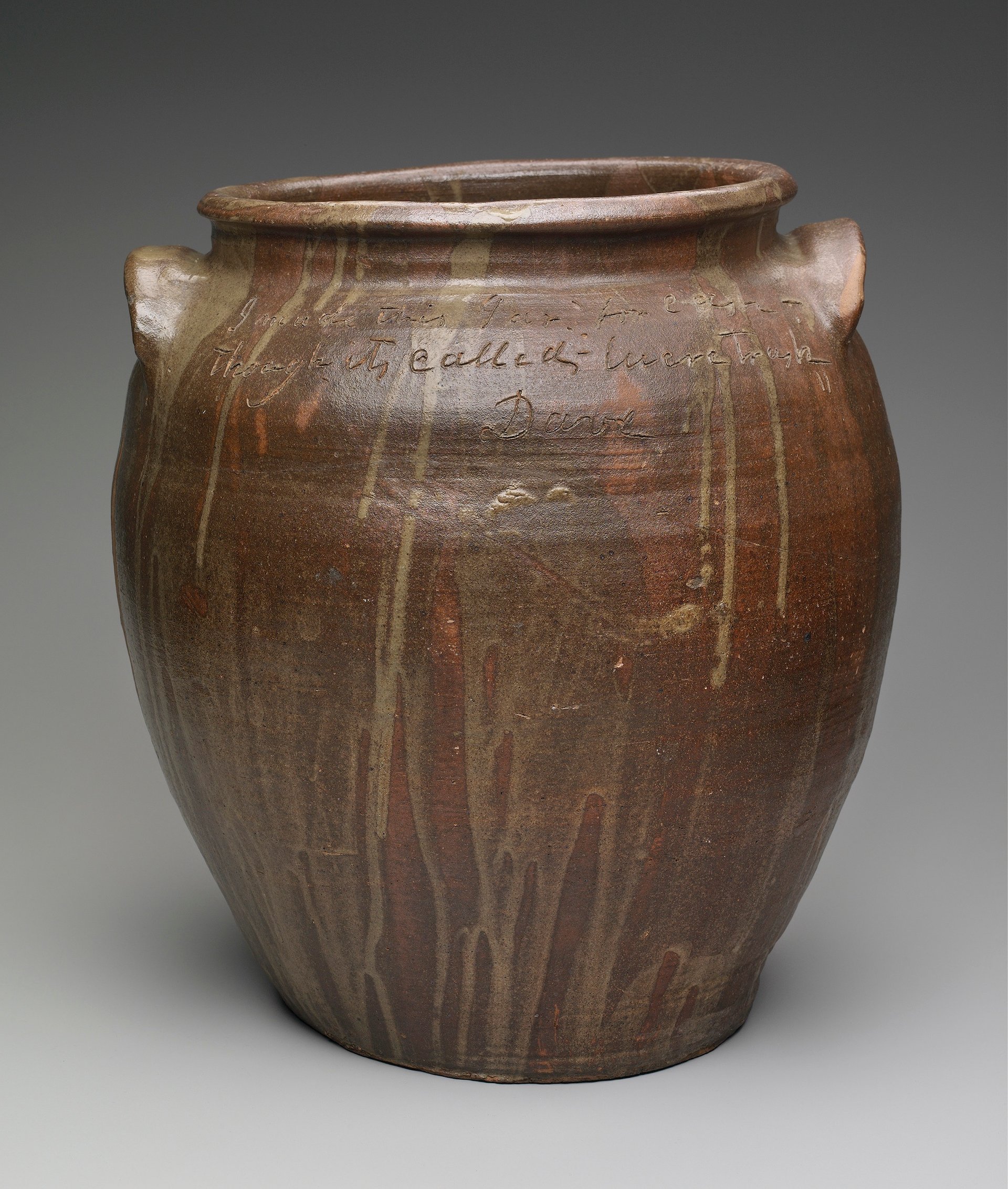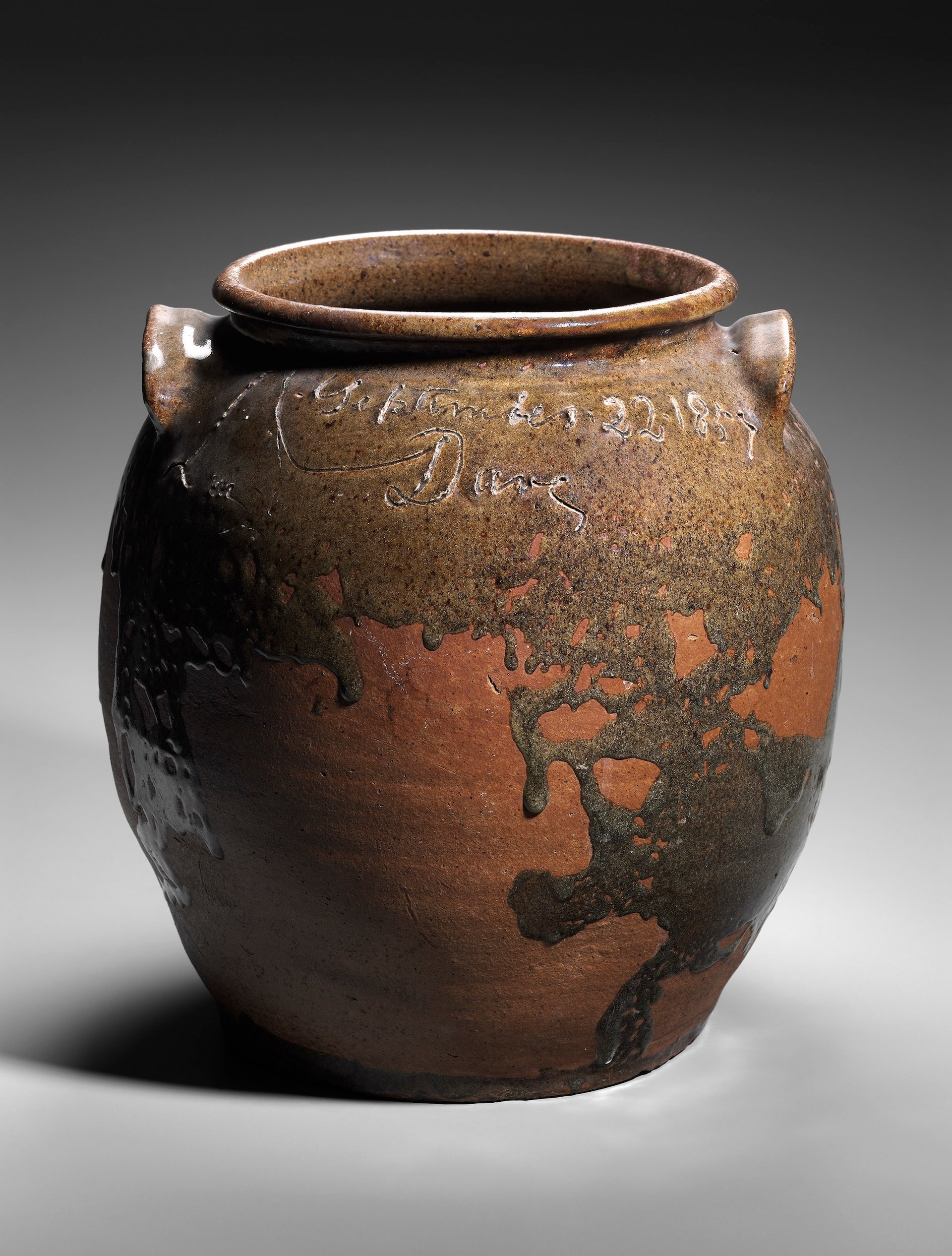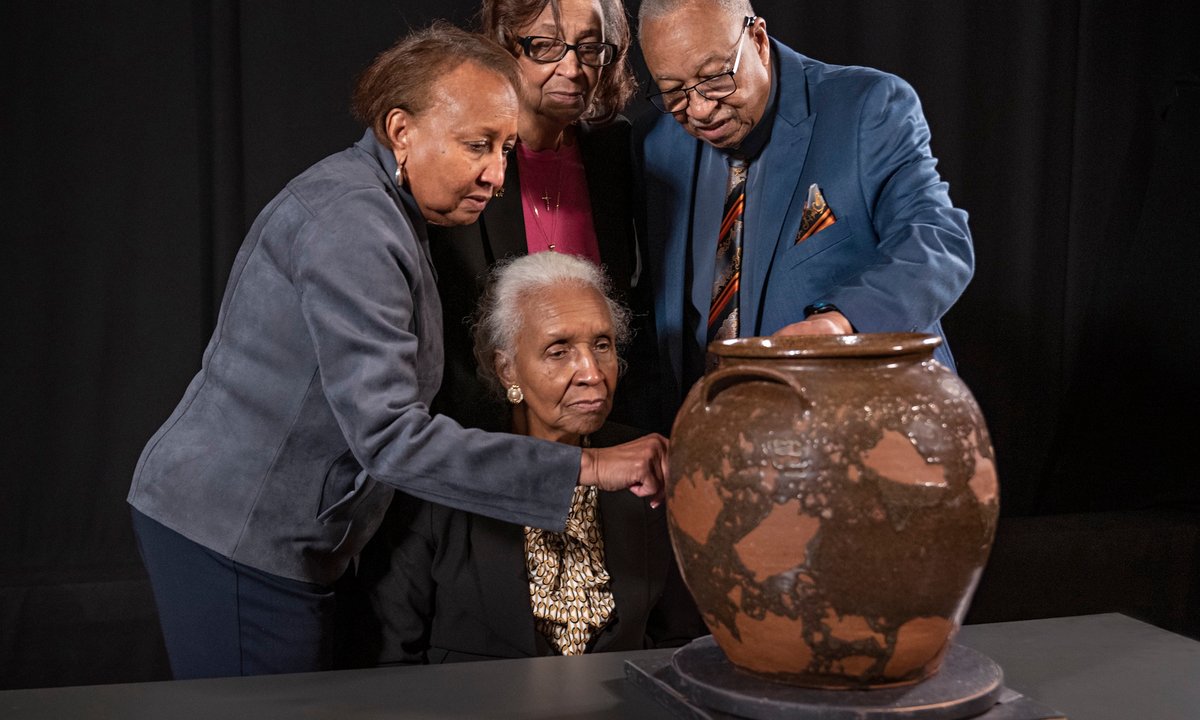In a really uncommon and sure precedent-setting settlement, the Museum of Nice Arts (MFA) Boston has agreed to return two works from 1857 by the Black potter David Drake (round 1800-around 1870), who made his bold jars whereas enslaved, to his present-day descendants.
By the phrases of the contract, a type of vessels will stay on mortgage to the museum for at the least two years. The opposite—a masterpiece referred to as the “Poem Jar”—has been bought again by the museum from the heirs for an undisclosed sum. Now the work comes with “a certificates of moral possession”.
“In reaching this decision, the MFA recognises that Drake was disadvantaged of his creations involuntarily and with out compensation,” a museum spokesperson mentioned in a press release. “This marks the primary time that the museum has resolved an possession declare for artworks that had been wrongfully taken beneath the circumstances of slavery within the Nineteenth-century US.”

Dave Drake (or Dave the Potter), Storage jar, 1857 Artwork: John H. and Ernestine A. Payne Fund, Otis Norcross Fund, Edwin E. Jack Fund, Elizabeth M. and John F. Paramino Fund in reminiscence of John F. Paramino, Boston Sculptor, Harriet Otis Cruft Fund and Seth Ok. Sweetser Fund, from the descendants of David Drake. {Photograph}: © Museum of Nice Arts, Boston
The lawyer representing Drake’s descendants, George Fatheree, goes farther. He believes their settlement “is groundbreaking within the artwork world. The appliance of ideas of moral restitution to art work created by enslaved Individuals, that is the primary time that has ever occurred to my data.”
Ethan Lasser, chair of the artwork of Americas on the MFA, says the museum has realized from its work restituting Nazi-looted artwork. “We’ve change into very skilled in Holocaust restitution. We’re coping with [repatriation] points in our African collections and Native American collections,” he says. “And we wish to convey the identical normal to the fullness of our assortment.” He considers Drake’s work an instance of “stolen property” too, “because the artist is all the time the primary proprietor of his work and he by no means received to make the decision about the place it went or what he was paid for it”.
Born enslaved round 1800 in Edgefield, South Carolina, a area recognized for its wealthy clay, Drake was considered one of comparatively few African American potters to signal his work. He additionally dared—regardless of punitive anti-literacy legal guidelines for enslaved folks within the state—to etch brief sayings or poems on the jars, making them highly effective acts of resistance. Some inscriptions boast of the jar’s supposed contents or monumental capability; others comment extra poignantly on his personal life or working circumstances.
The Poem Jar, which the MFA initially purchased in 1997 from a supplier in South Carolina, incorporates a couplet that hints at Drake’s monetary exploitation. The inscription reads: “I made this Jar = for money/Although its referred to as Lucre trash.” At the moment in a gallery for self-taught and outsider artwork on the museum, it’s going to assume a extra distinguished spot on the entrance of the Artwork of Americas wing as soon as renovated in June 2026. (The jar that Drake’s household now owns has a signature and date however no writing.)
One other jar made the identical 12 months, 1857, has a very wrenching inscription in mild of Drake’s compelled separation from a girl believed to be his spouse and her two sons. That vessel, on the Greenville County Museum of Artwork, reads: “I ponder the place is all my relation.”
Considered one of Drake’s great-great-great-great grandsons, the youngsters’s e book creator and producer Yaba Baker, says he feels the restitution course of provides one reply to that query. “It’s been thrilling, overwhelming and feels full circle,” he says. He praised the MFA for “exhibiting integrity and management” in “permitting us to hook up with Dave’s legacy”, noting that “to go from being slaves to having a household of engineers and medical doctors and other people in government positions is a testomony to Dave’s legacy differently”.

Dave Drake (or Dave the Potter), Jar, 1857 Artwork: Ethically borrowed from the Dave the Potter Legacy Belief LLC, established for the good thing about the artist’s descendants {Photograph}: © Museum of Nice Arts, Boston
These descendants started speaking about getting concerned in Drake’s legacy in 2022, upon the opening of Hear Me Now: The Black Potters of Previous Edgefield, South Carolina, collectively organised by the MFA and the Metropolitan Museum of Artwork in New York. The household quickly employed Fatheree, recent from his win within the Bruce’s Seashore land reparation case. Earlier this 12 months they organised the David Drake Legacy Belief, ruled by 5 of the oldest heirs.
To this point there are about 15 members of the family concerned, however they’ve created an internet site in order that different descendants of David Drake will be recognized and be part of the efforts—what Fatheree calls “a giant tent method”.
The initiative’s repercussions might be widespread. There could also be as many as 250 pots by Drake nonetheless in existence, and over the previous 5 years the marketplace for his work has exploded, pushed primarily by American museums competing for items within the hopes of telling a extra complicated story in regards to the historical past of slavery within the US. A number of have paid six figures for his work, and in 2021 the Crystal Bridges Museum of American Artwork paid a record-setting $1.56m for a 25-gallon stoneware jar at public sale.
Different museums that personal Drake’s work embody the Met, the Philadelphia Artwork Museum, the De Younger Museum in San Francisco, the Artwork Institute of Chicago, Harvard Artwork Museums, the St Louis Artwork Museum and the Smithsonian American Artwork Museum in Washington, DC, in addition to smaller venues within the American South.
Fatheree confirms he has begun to achieve out to a few of these different artwork establishments on behalf of the household. “Our method has been considered one of collaboration and invitation. I’m not a litigator; we didn’t go to the museum and file a lawsuit [or] threaten to sue them. However our hope and admittedly our expectation is that different establishments”—and personal collectors of Drake’s work, he provides—”will observe the Boston museum’s lead right here.”
“This isn’t simply a possibility for museums to be on the precise facet of historical past,” he says. “It’s a possibility for museums to rewrite historical past and suppose not nearly possession and stewardship, however take into consideration stewardship and justice.”

